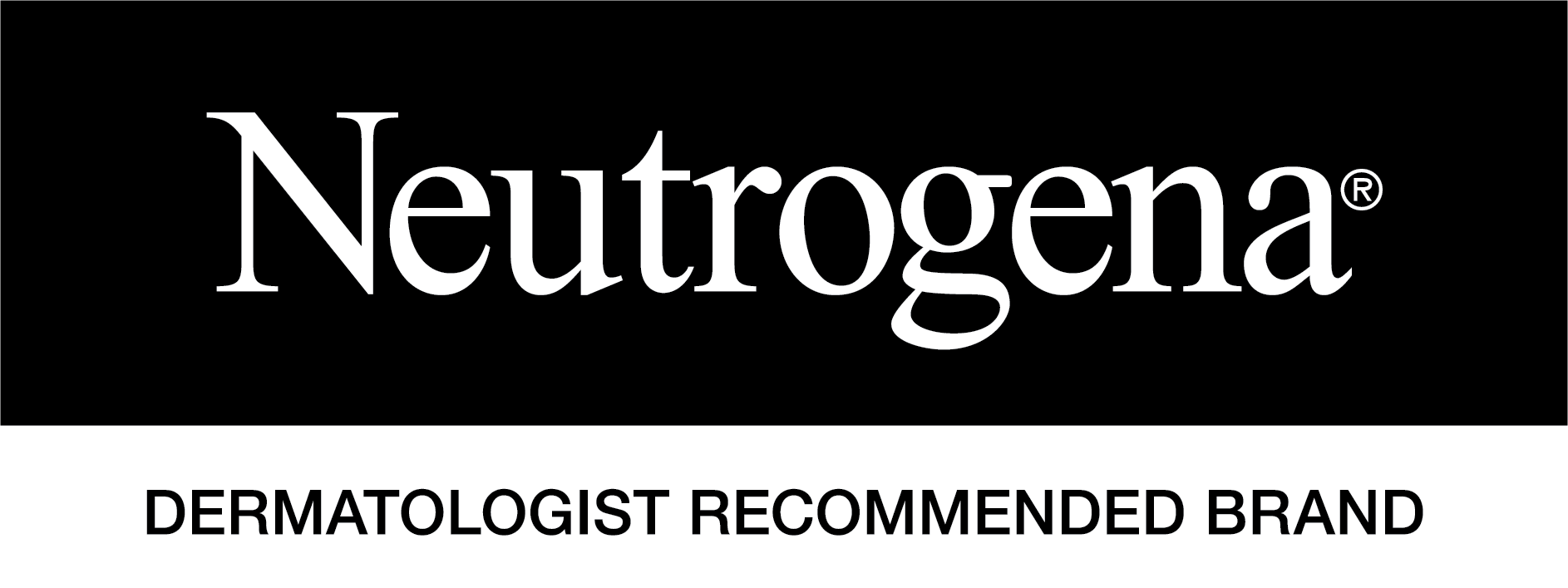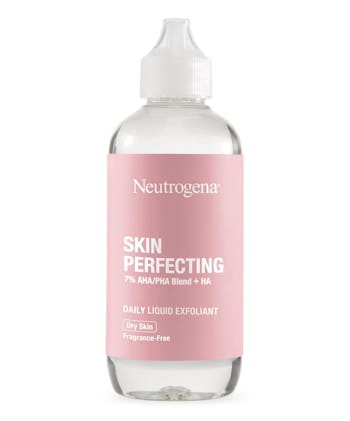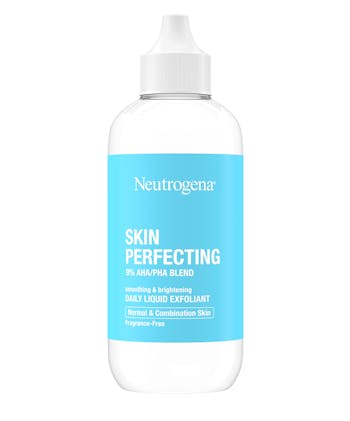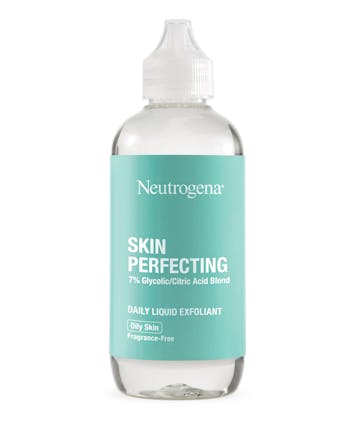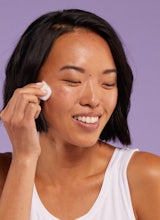Chemical exfoliants formulated with skincare ingredients like AHAs, BHAs and PHAs are having a moment. (OK, we know that’s probably one too many acronyms, but we promise to break them down for you.) It’s no surprise that products containing these powerhouse ingredients are showing up in more and more shelfies. Who doesn’t want that natural-looking glow?
Radiant-looking skin is often the result of regular exfoliation. There are two types of exfoliation methods (physical and chemical) that we get into below. But first, those acronyms.
What are AHAs, BHAs and PHAs?
AHAs, BHAs and PHAs are skin acids and three types of chemical exfoliation. Before you cringe, allow us to explain.
AHA stands for alpha hydroxy acid.
It works on the surface of the skin to reduce the appearance of uneven texture. This type is usually derived from fruits. We’re talking papaya, pumpkin and pineapple, oh yes! You might also hear glycolic acid, mandelic acid, and citric acid because those are AHAs commonly used in skincare products.
BHA stands for beta hydroxy acid.
They’re oil-soluble and can go within the skin’s surface to exfoliate and help dissolve dead skin and oil that clog pores. A perfect example of a BHA is one we all know and love: salicylic acid.
PHA stands for poly hydroxy acid
It’s a slightly larger molecule than what’s found in an AHA and works in a similar way. This one tends to be milder and contains additional hydrating properties. An example of a PHA is gluconolactone, a liquid exfoliant and humectant in one.
While we love the benefits of salicylic acid, we’ll focus on AHAs and PHAs and the difference between physical and chemical exfoliation.
What’s chemical exfoliation?
We shed dead skin every day. Yep! A chemical exfoliant (aka acid like AHA and PHA) complements this process. It works to loosen up the bonds between the dead surface skin so they can be removed more easily. With regular use, the surface of your skin may appear more even and radiant. It can help to minimize the appearance of pores, too.
A chemical exfoliant like AHAs are ideal for dry, normal, combo and mature skin. The benefits of AHAs include smoother and brighter-looking skin. PHAs help skin appear younger, brighter and healthier looking.
Chemical exfoliants are typically found in serums, facial masks, pads and more. You can also chat with your dermatologist about whether or not a chemical peel is right for your skin.
What’s physical exfoliation?
Physical exfoliants are formulated with some type of small particle. Think sugar granules or eco-friendly scrubbing beads. The particles work to loosen and remove dead skin from the skin’s surface to reveal smoother and brighter-looking skin. Sort of like buffing.
Keep in mind, this type of exfoliating may be a bit abrasive for some skin types such as dry and sensitive skin. You’ll find physical exfoliants in the form of facial scrubs, pads and wipes. A facial brush works in the same way, too. For professional-grade physical exfoliation, chat with your dermatologist about microdermabrasion to find out if your skin could benefit.
So, now that you know the difference, it’s helpful to know when to use a chemical exfoliant in your skincare routine. (Hint: Pair it with our Skin Balancing cleansers for your skin type.)
How to add a chemical exfoliating product to your skincare routine
Turns out, you can use one every day as step two in your regimen. Liquid exfoliants make it super easy to apply AHAs or PHAs in just a few swipes. Pour a small amount onto a cotton round and apply an even layer across your freshly washed face and neck. Kind of like a face toner. Be careful around the eyes and wait for it to sink into your skin before following up with your fave moisturizer (step three) and sunscreen (step four).
If you choose to use a chemical exfoliant in a face mask form, you’ll want to follow instructions on the packaging. One to two days a week is the general rule of thumb.
Ready to give your skin that next-level exfoliation? A luminous complexion is virtually at your fingertips. Shop the Neutrogena™ Skin Perfecting collection. Pssst… Don’t forget. We love seeing your glow. Be sure to share your Skin Perfecting poses with us by tagging @Neutrogena.
